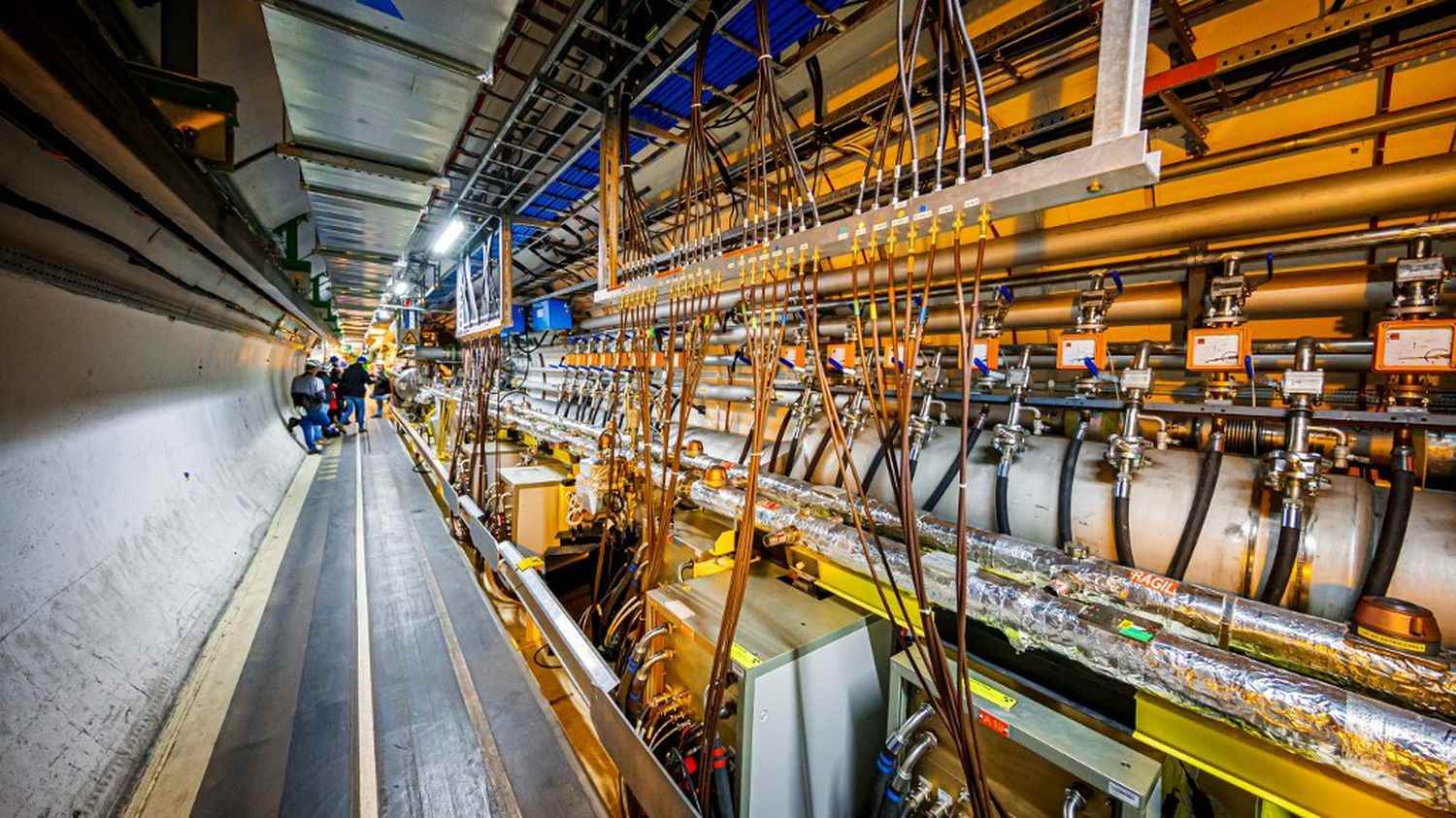It is preparing to revolutionize our knowledge of the Universe once again. CERN’s Large Hadron Collider (LHC) is due to reach full power on Tuesday 5 July. After three years of shutdown for maintenance and improvement work, it restarted on April 22. Franceinfo presents the largest particle accelerator in the world, this temple of the study of the infinitely small.
It is 27 km long and lies 100 meters underground
The LHC is a 27 km long ring buried 100 m underground, on the border between France and Switzerland, not far from Geneva. If the device is buried that deep, it’s “to avoid the pollution of cosmic particles which could disturb the experiments”, as Cern explains in this video presentation of the LHCb experiment. Access to the particle accelerator is highly secure: before taking the elevator that connects it to the surface, a device scans the iris of visitors.
Why are such large instruments necessary to study the infinitely small? In summary, explain the Atomic Energy and Alternative Energies Commission (CEA), the particles behave like waves or waves. According to quantum mechanics, energy is inversely proportional to wavelength. This is why working with short wavelengths requires an extremely large amount of energy.
It is the scene of (very) violent collisions
The LHC is a collider. Inside, physicists propel protons, particles located in the nucleus of atoms. In the ring, two beams of protons circulate, each in one direction. They move at close to the speed of light, collide and explode. The more violent these collisions, the more they break up the particles and help scientists identify their components and their interactions.
After three years of work, the LHC will reach its full collision power of 13.6 teraelectronvolts (TeV). This is unprecedented, notes Laurent Vacavant, deputy scientific director at the National Institute of Nuclear Physics and Particle Physics. But what does it correspond to? “It’s very difficult to illustrate because these are units of energy that are really specific to our field. They are infinitesimal energies”he concedes. “To give an idea, we often compare this energy to that which a mosquito must expend to stay in flight. Except that, in the LHC, this energy is concentrated in an extreme way in the collision of two protons”he says.
“The protons being infinitely small, this makes an absolutely gigantic concentration of energy.”
Laurent Vacavantat franceinfo
With this unprecedented power, physicists hope to obtain more “interesting collisions” and “rare events” with the possible creation of new or previously unobserved particles, relates Laurent Vacavant.
The detectors of several experiments (Atlas, CMS, ALICE and LHCb) distributed over the 27 km of the ring are then responsible for capturing and recording the collisions. The CMS, for example, functions as a gigantic camera, which takes three-dimensional images of collisions. “We are aiming for a rate of 1.6 billion proton-proton collisions per second for the Atlas and CMS experiments”said Mike Lamont, director of accelerators and technology at CERN.
It has already revolutionized physics
Thanks to the LHC, in 2012, Fabiola Gianotti, then coordinator of the CMS experiment, announced the discovery of the Higgs boson. This revolutionized physics, confirming the prediction of researchers who, nearly 50 years earlier, made it a centerpiece of the Standard Model of particle physics (SM).
>> Seven questions about the Higgs boson
“The Higgs boson is linked to some of the deepest questions in fundamental physics, from the structure and shape of the Universe to how other particles organize themselves”explained the one who is now the director general of CERN.
But the Higgs boson remains mysterious. “Is it a fundamental or a composite particle”namely an assembly of several particles still unknown, wonders Joachim Mnich, director of research and calculation at CERN. “Is this the only existing Higgs particle or are there others?” he continues.
It could help to learn more about dark matter
“Discovering the Higgs boson is like finding a needle in a haystack”, notes Laurent Vacavant. It took about 1.2 billion billion proton collisions to find it. The new LHC operating phase should make it possible to multiply this figure by twenty. “A significant increase that opens the way to new discoveries”Judge Mike Lamont.
In addition to the Higgs boson, experiments at the LHC have already discovered more than 60 composite particles predicted by the Standard Model. With this new phase of operation of the particle accelerator, scientists are hoping for new findings. Laurent Vacavant notably mentions dark matter. This phantom, enigmatic matter would be made up of exotic high-mass particles. According to certain hypotheses, there could be between five and seven times more dark matter in the Universe than visible matter. This means that the matter we know (which is made of atoms) would represent less than 20% of all the matter that makes up our Universe.
This dark matter, which has never before been detected and observed, is an important key to understanding the movements of large structures such as galaxies and clusters of galaxies. Flushing it out would be a major discovery, and tracking it down is a priority for researchers everywhere. “Dark matter, we know that it is a particle that practically does not interactexposes Laurent Vacavant. In some models there is a particle [hypothétique] called neutralino. As its name suggests, it is a very neutral particle, which would be difficult to see. And depending on the mass of this neutralino, it could have all the properties for dark matter.”, he explains. The coming years promise to be as exciting as they are exciting at the LHC.
